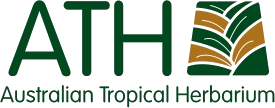Pteridaceae
Australian Tropical Ferns and Lycophytes - Online edition
Cheilanthes tenuifolia

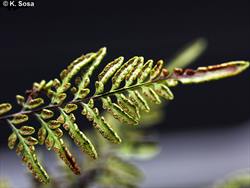
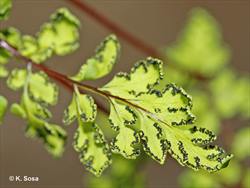

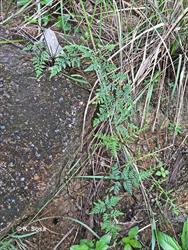

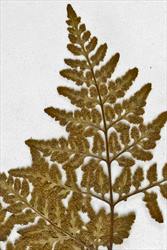
Cheilanthes tenuifolia (Burm.f.) Sw.
Link to Australian Plant Name Index for publication details and synonyms: https://id.biodiversity.org.au/name/apni/62496
Fronds to 63 cm long and 17 cm wide; stipe and rachis dark red-brown, glabrous or with sparse hairs (2–13 cells) and very sparse, slender scales. Lamina pentagonal, triangular or ovate, 3–4-pinnate at base, 3-pinnate for most of length; larger pinnae triangular-ovate; pinnules lanceolate or ovate; ultimate pinnules sometimes slightly caudate; margins entire or lobed; upper and lower surfaces with very sparse, short (less than 0.5 mm), pointed hairs (2 or 3 cells), occasionally almost glabrous. Spores tetrahedral or rounded-tetrahedral, granulose and trilete, with varying amount of reticulate-echinate ornamentation, 38–53 µm diam., 32 per sporangium.
Occurs in coastal regions of the NT and QLD. Also in Asia, Malesia, Melanesia, Polynesia and Australia.
Terrestrial in the ground layer of coastal open woodland, usually in rocky areas.
Similar to Cheilanthes contigua. The two species can usually be separated on pinnule shape, those of C. tenuifolia tending to be ovate and acute and those of C. contigua obovate and obtuse. The pinnae of C. tenuifolia are not usually as well-separated along the rachis nor are the pinnules as crowded as they usually are in C. contigua. Rarely, specimens of C. tenuifolia have somewhat caudate pinnule tips, but these are not as strikingly caudate as C. caudata, nor are the pinnules glabrous.
Field AR, Quinn CJ, Zich FA (2022) Australian Tropical Ferns and Lycophytes. apps.lucidcentral.org/fern/text/intro/index.htm (accessed online INSERT DATE).
Field AR, Quinn CJ, Zich FA (2022) ‘Platycerium superbum’, in Australian Tropical Ferns and Lycophytes. apps.lucidcentral.org/fern/text/entities/platycerium_superbum.htm (accessed online INSERT DATE).

